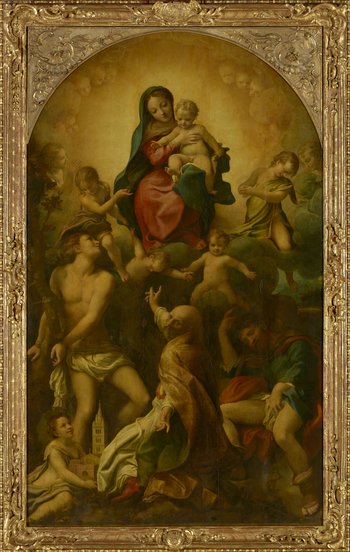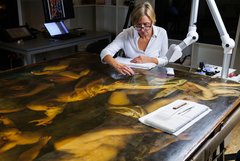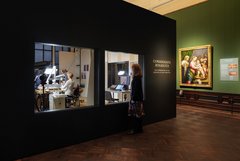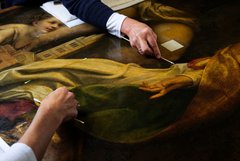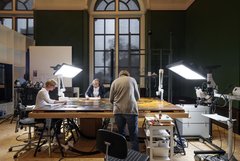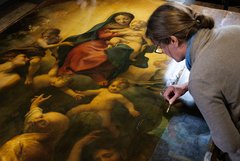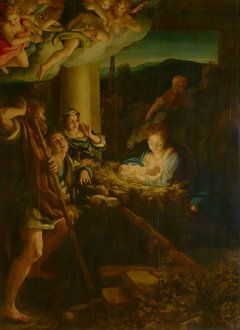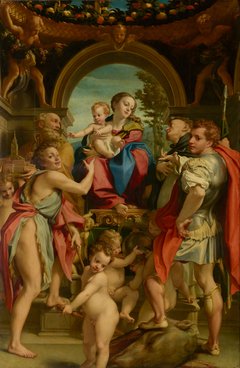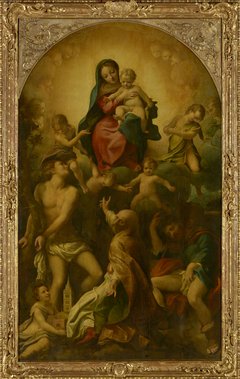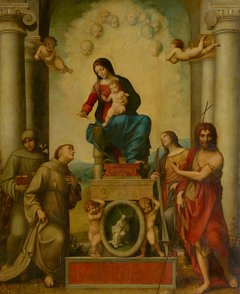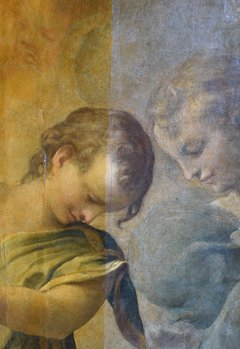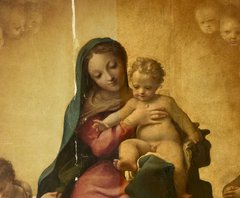First steps of the conservation
Before the conservation of Correggio’s Madonna of Saint Sebastian began, various technical examinations, such as X-ray, UV fluorescence analysis and infrared reflectography, were carried out. The results of these examinations provide important insights into the technical structure of the painting and the current condition of the painting layer and the wooden support. Along with other sources, they form an important basis for the conservation concept.
Currently, the front of the painting is being conserved. This is done because heavily yellowed, unevenly applied layers of varnish, aged fillings, and colour-altered retouching and overpainting from past centuries limit the painting’s aesthetic effect. Before their removal could begin, solubility tests were first carried out on individual, small sections in the painting. Using the most suitable method, the varnish layers and overpaintings are now gradually reduced without affecting the original paint layers underneath. The original colourfulness of Correggio’s painting, which seems to have been largely preserved, will increasingly become visible again.

